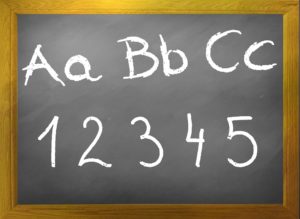
Hot Topics
Back to Basics: Hit the Reset Button to Refresh Your Data (and Selling) Skills!
January 20, 2022
Are you hitting the reset button for 2022? Well, we’re doing just that at Research Director, Inc. One week each month, we’ll provide you with an educational series article on “Back to Basics.” We’ll focus on terminology, basic concepts of audience estimates, and how you can use data to ensure a successful year.
In this first edition, we are covering the basic terms for radio audience measurement. Do you know that there are only two main things measured? They are how many people are listening and how long they listen. You know these as Cume and Time Spent Listening (TSL).
CUME Persons represents the number of different people that are listening to a radio station over a period of time (daypart). This can also be referred to as REACH. Cume is short for cumulative. You’re counted once…and only once. Just like the turnstile at a venue entrance that counts attendance. Example: If you have a Cume audience of 450,000 in the Mon-Sun 6-12M daypart, you can say “Our station reaches 450,000 different people throughout the week.” Cume is a great estimate to use for local direct sales to demonstrate the power of your total audience.
TSL (Time Spent Listening) is the average amount of time listeners spend with a radio station. It’s expressed in hours and minutes as HH:MM. If your weekly TSL is 4:30, it means that your typical listener spends about 4 ½ hours listening throughout the week. Cume and TSL are generally inversely related…as one goes up, the other goes down. Why is this? When a station grows cume, generally those new listeners do not listen at the same level as existing listeners so their lower TSL contributes to a lower average among all listeners. Sales tip: Higher TSL means your listeners are spending more time with the station and, thus, have a better chance of hearing an ad.
This brings us to AQH Persons (Average Quarter-Hour). Once we have Cume (how many) and TSL (how long), the AQH is created. It represents the average number of people listening in any quarter hour … or, I like to say, “at any given time.” It’s a 15-minute interval. Keep in mind there are no AQH people walking the streets. These are not real people. It shows the average number of people that will hear an ad. An AQH persons of 8,800 can be expressed as “At any given time, about 8,800 people are listening to our station” or “About 8,800 people will hear your ad every time it airs on our station”.
Next month we will talk about Ratings and Share – what’s the difference and why do I need to know? It’s important stuff, so stay tuned …
For more info, reach out to us here.
-Karen Morriss, Director of Client Services

Comments